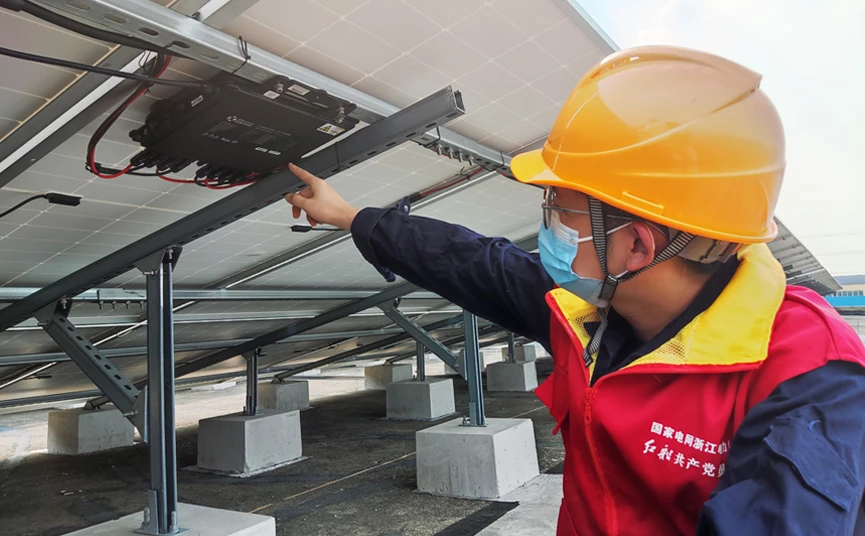10kW Grid-Tied Inverter Benefits and Installation Tips for Homeowners
Understanding Grid-Tied 10kW Inverters An Overview
In today’s energy landscape, the demand for renewable energy sources continues to grow, with solar power leading the charge in sustainable energy solutions. Central to the functionality of solar systems is the inverter, specifically grid-tied inverters. This article focuses on the significance of a 10kW grid-tied inverter, detailing its importance, functionality, and benefits in harnessing solar energy efficiently.
What is a Grid-Tied Inverter?
A grid-tied inverter converts the direct current (DC) electricity generated by solar panels into alternating current (AC) electricity, which is the form used by most homes and businesses. The term “grid-tied” indicates that the system is connected to the utility grid. This setup allows excess power generated by the solar system to be fed back into the grid, often allowing the system owner to earn credits or payments for the surplus energy produced.
The Importance of a 10kW Inverter
A 10kW inverter is particularly suitable for medium-sized solar power systems. It can typically handle a solar array in the range of 10 to 15 kW of peak power production, depending on factors like solar panel efficiency and local sunlight conditions. This inverter size is commonly chosen for residential applications and small businesses where energy needs can align with solar output.
Installing a 10kW inverter allows for the optimization of energy usage—the capacity to produce enough energy to power a household while potentially feeding back into the grid. This is particularly advantageous during peak sunlight hours when energy demand can be lower than the amount of energy generated by solar panels.
Functionality of a 10kW Grid-Tied Inverter
The primary function of a 10kW grid-tied inverter is to synchronize the solar power generated with the existing utility power. Here’s how it works
1. Conversion of Electricity As solar panels generate DC electricity, the inverter transforms this into AC electricity to make it compatible with household appliances. 2. Grid Synchronization The inverter continuously monitors the grid voltage and frequency to ensure that the electricity supplied to your home is synchronized with that of the utility grid.
inverter on grid 10kw

3. Maximum Power Point Tracking (MPPT) Good quality inverters employ MPPT technology to maximize the energy harvest from solar panels by adjusting electrical operating points during variable conditions such as shading and temperature changes.
4. Safety Features Grid-tied inverters are equipped with safety mechanisms like anti-islanding protection, ensuring that the inverter shuts down during a grid outage, thus protecting utility workers and preventing damage.
Benefits of Using a 10kW Grid-Tied Inverter
1. Cost Savings By using a grid-tied system, homeowners can lower their electricity bills significantly. Any surplus energy generated can be fed back to the grid, potentially earning credits through net metering.
2. Energy Independence While still connected to the grid, homeowners gain a degree of energy independence, reducing reliance on fossil fuels and contributing to sustainability.
3. Simplicity in Installation Grid-tied inverters are typically easier to install than off-grid systems, as they do not require battery storage systems, making them a popular choice for both installers and homeowners.
4. Environmental Impact Utilizing solar energy helps reduce carbon footprints, making it an environmentally friendly option for energy needs.
5. Increased Property Value Homes equipped with solar energy systems often see an increase in property value, making them a worthwhile investment.
Conclusion
The adoption of a 10kW grid-tied inverter plays a crucial role in modern solar energy systems. With its ability to convert, synchronize, and optimize solar energy production, it stands at the forefront of the renewable energy movement. By investing in such technology, homeowners can take meaningful steps towards sustainable living while enjoying lower energy costs and contributing to the reduction of carbon emissions. As the world continues to shift towards renewable energy, understanding and utilizing grid-tied inverters will become an increasingly important aspect of energy management for both residences and businesses.
-
String Solar Inverter: The High-Efficiency Solution for Smart Solar EnergyNewsJul.14,2025
-
Revolutionizing Rooftop Energy with the Power of the Micro Solar InverterNewsJul.14,2025
-
Power Independence with Smart Off Grid Solar Inverter SolutionsNewsJul.14,2025
-
On Grid Solar Inverter: Powering the Future with Smart Grid IntegrationNewsJul.14,2025
-
Monocrystalline Solar Panels: High-Efficiency Power for the Future of Clean EnergyNewsJul.14,2025
-
Bifacial Solar Panel: A Smarter Investment for Next-Generation Energy SystemsNewsJul.14,2025







